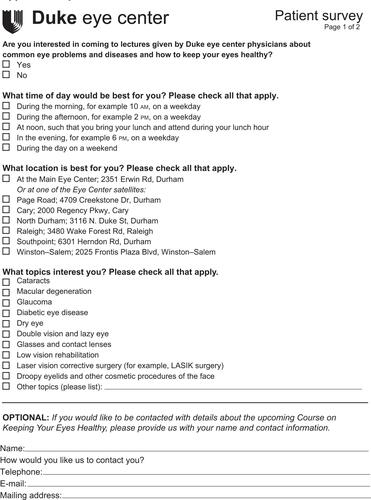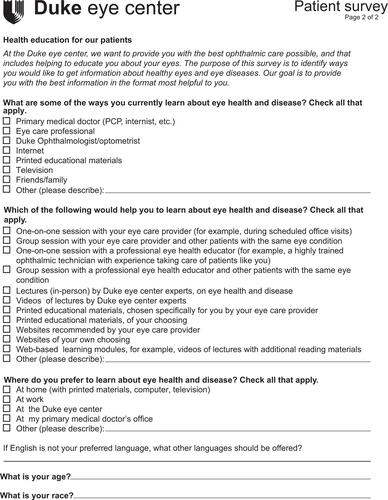Abstract
Background
The learning preferences of ophthalmology patients were examined.
Methods
Results from a voluntary survey of ophthalmology patients were analyzed for education preferences and for correlation with race, age, and ophthalmic topic.
Results
To learn about eye disease, patients preferred one-on-one sessions with providers as well as printed materials and websites recommended by providers. Patients currently learning from the provider were older (average age 59 years), and patients learning from the Internet (average age 49 years) and family and friends (average age 51 years) were younger. Patients interested in cataracts, glaucoma, macular degeneration, and dry eye were older; patients interested in double vision and glasses were younger. There were racial differences regarding topic preferences, with Black patients most interested in glaucoma (46%), diabetic retinopathy (31%), and cataracts (28%) and White patients most interested in cataracts (22%), glaucoma (22%), and macular degeneration (19%).
Conclusion
Most ophthalmology patients preferred personalized education: one-on-one with their provider or a health educator and materials (printed and electronic) recommended by their provider. Age-related topics were more popular with older patients, and diseases with racial risk factors were more popular with high risk racial groups.
Supplementary material
Disclosure
JAR receives salary support from a K12 career development award from the National Eye Institute. KWM receives salary support from a VA HSR & D career development award. The authors report no other conflicts of interest in this work.


